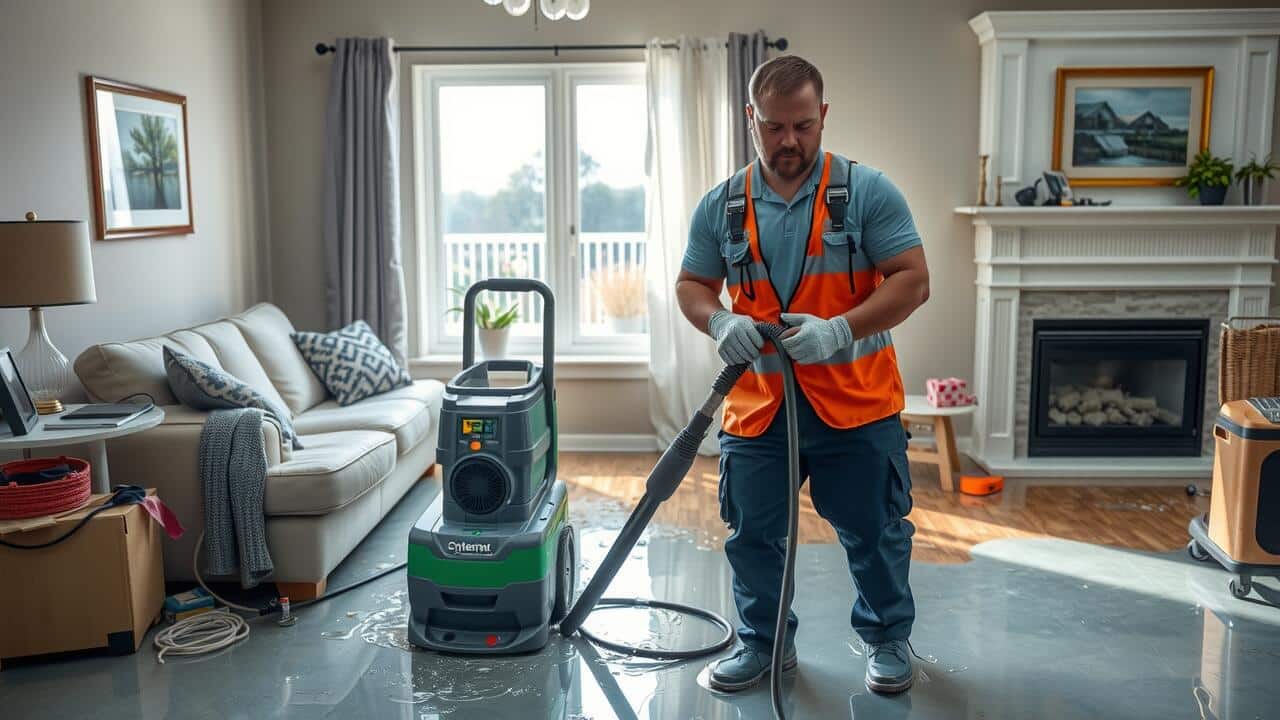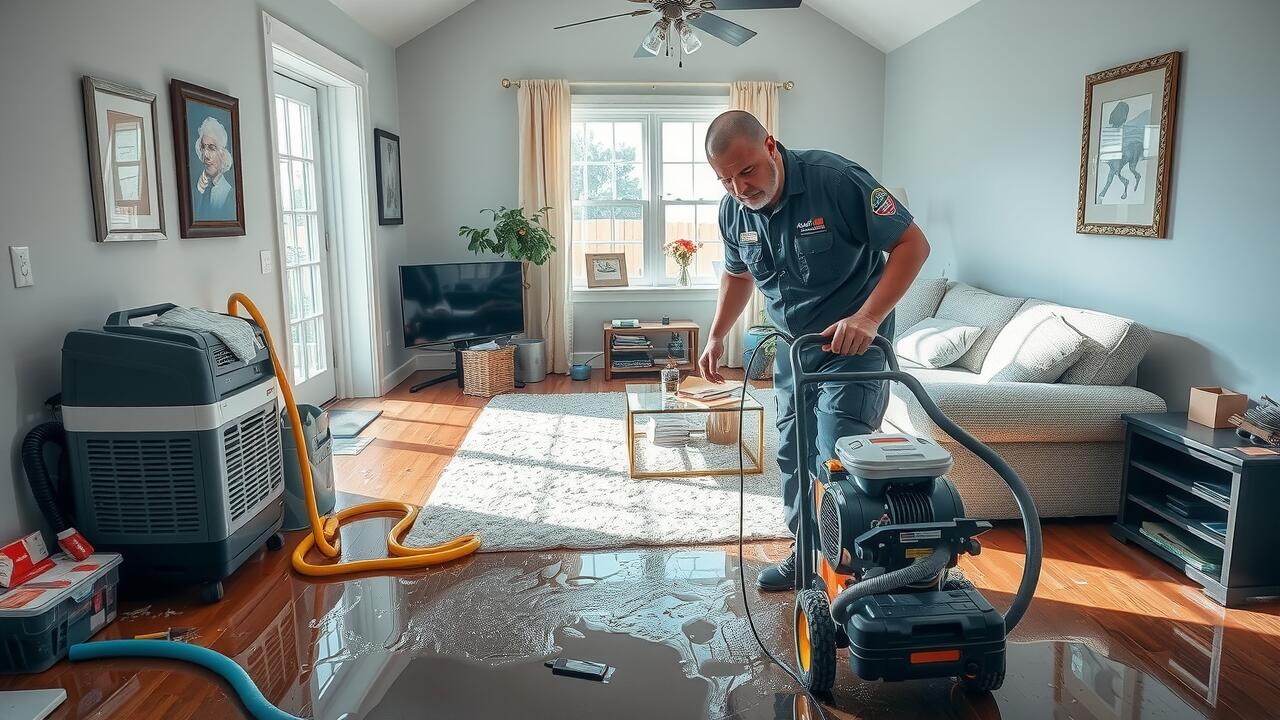
Table Of Contents
Common Water Damage Scenarios and Their Costs
Water damage can stem from various sources including burst pipes, appliance malfunctions, or natural disasters. The costs for restoration vary significantly depending on the severity and type of damage. Simple leaks may require minimal repairs and can typically range from a few hundred to a thousand dollars. However, more severe cases such as extensive flooding or storm damages often lead to costs ranging from several thousand to tens of thousands, especially if reconstruction is necessary.
Flood damage restoration in residential areas often presents unique challenges. These scenarios often involve extensive water removal, dehumidification, and potential mold remediation. The costs here can escalate quickly, especially if homeowners need to replace flooring, drywall, or electrical systems. Immediate action is crucial to minimize expenses and prevent further damage, highlighting the necessity of professional assessment and timely intervention in severe water damage events.
Specific Case Studies of Different Water Damage Instances
Specific water damage scenarios can vary significantly in terms of costs and the approach needed for restoration. For instance, a basement flooded due to heavy rains might require extensive cleanup. Homeowners often face charges related to water extraction, drying, and thorough disinfection. In such cases, restoration expenses can reach several thousand dollars depending on the extent of the damage and the square footage affected.
Another example involves a burst pipe in an upstairs bathroom, leading to water seeping through the ceiling of the living room. The restoration process here includes not only addressing the water damage but also potential repairs to drywall and insulation. Flood damage restoration in this context often necessitates immediate intervention to prevent mold growth. The total costs can escalate if mold remediation becomes necessary, further complicating the overall restoration process.
The Role of Equipment in Restoration Costs
The role of equipment in restoration costs is critical, especially during situations involving significant water exposure. Water damage restoration companies rely on various specialized tools to efficiently extract water, dry out spaces, and prevent further deterioration. For instance, industrial-grade dehumidifiers and air movers can significantly speed up the drying process. These pieces of equipment often come with rental fees that can contribute substantially to the overall expenses.
Flood damage restoration in homes may also require the use of additional equipment, such as moisture meters and thermal imaging cameras. These tools help professionals assess the extent of the damage and identify hidden moisture pockets that may lead to mold growth if not addressed. The investment in such technology ensures thorough restoration but also adds to the timeline and costs associated with the project.
Types of Equipment Used and Their Associated Costs
Restoration professionals rely on various types of equipment to effectively address water damage. Common tools include dehumidifiers, air movers, and moisture meters. Dehumidifiers are essential for reducing humidity levels and preventing mold growth. Air movers facilitate faster evaporation of moisture from affected surfaces. Moisture meters help technicians accurately assess the extent of water intrusion, ensuring thorough restoration. The costs for renting or purchasing this equipment can vary significantly based on quality and capacity.
Flood damage restoration in residential properties often leads to additional expenses related to specialized equipment. High-capacity dehumidifiers and industrial-grade air movers, while more expensive, can expedite the drying process, ultimately reducing overall restoration time. Investing in advanced moisture detection tools can also increase upfront costs but may result in a more effective restoration outcome. Understanding these equipment costs can help property owners prepare for the financial implications of water damage restoration efforts.
Additional Services That May Affect Restoration Expenses
When assessing the overall expenses of water damage restoration, it’s important to consider additional services that might be required. Flood damage restoration in areas severely affected often necessitates mold remediation to prevent health hazards. Mold can thrive in damp environments, turning a simple restoration into a more complex process. The cost of mold remediation can vary significantly depending on the extent of the infestation, which may require specialized equipment and skilled labor.
Structural repairs are another factor that can influence restoration costs. If water damage has compromised walls, flooring, or foundations, repairs must be undertaken to ensure the integrity of the property. The need for these repairs often arises in cases of substantial flooding or prolonged water exposure. Like mold remediation, the price associated with structural repairs can range widely based on the extent of the damage and the materials involved in the restoration process. Understanding these potential additional services can help homeowners prepare for a more comprehensive cost assessment during recovery.
Mold Remediation and Structural Repairs
Mold remediation is often necessary following water damage, particularly in instances where moisture has been present for an extended period. When water infiltrates areas such as walls, ceilings, or floors, it creates an environment conducive to mold growth. The cost of mold remediation can vary based on the extent of the contamination and the area affected. Homeowners may face expenses ranging from a few hundred to several thousand dollars, especially if extensive demolition is required to remove contaminated materials.
Structural repairs are another significant component of water damage restoration. This process involves assessing the integrity of affected structures and making necessary repairs to prevent further damage. Water can weaken beams, foundations, and other structural elements, necessitating repairs that can range widely in cost. Flood damage restoration in residential properties often includes replacing drywall, flooring, and sometimes major structural components, all of which contribute to the overall expense of restoration services.
FAQS
What factors influence the cost of water damage restoration?
The cost of water damage restoration can be influenced by various factors including the extent of the damage, the type of water involved (clean, gray, or black water), the size of the affected area, and the specific restoration services required.
How much does it typically cost to restore water damage?
The typical cost for water damage restoration can range from $1,000 to $5,000 or more, depending on the severity of the damage and the services needed. More extensive damage or additional services like mold remediation can increase costs significantly.
Are there additional costs for emergency water damage services?
Yes, emergency water damage services often come with higher costs due to the immediate response required. Emergency restoration can range from $2,500 to $10,000 based on the situation and urgency.
Will my insurance cover water damage restoration?
Many homeowners’ insurance policies cover water damage restoration, but coverage varies by provider and policy type. It is essential to review your policy or consult your insurance agent to understand your coverage.
How long does the water damage restoration process take?
The duration of the water damage restoration process can vary based on the extent of the damage. On average, it can take anywhere from a few days to several weeks to fully restore a property.


